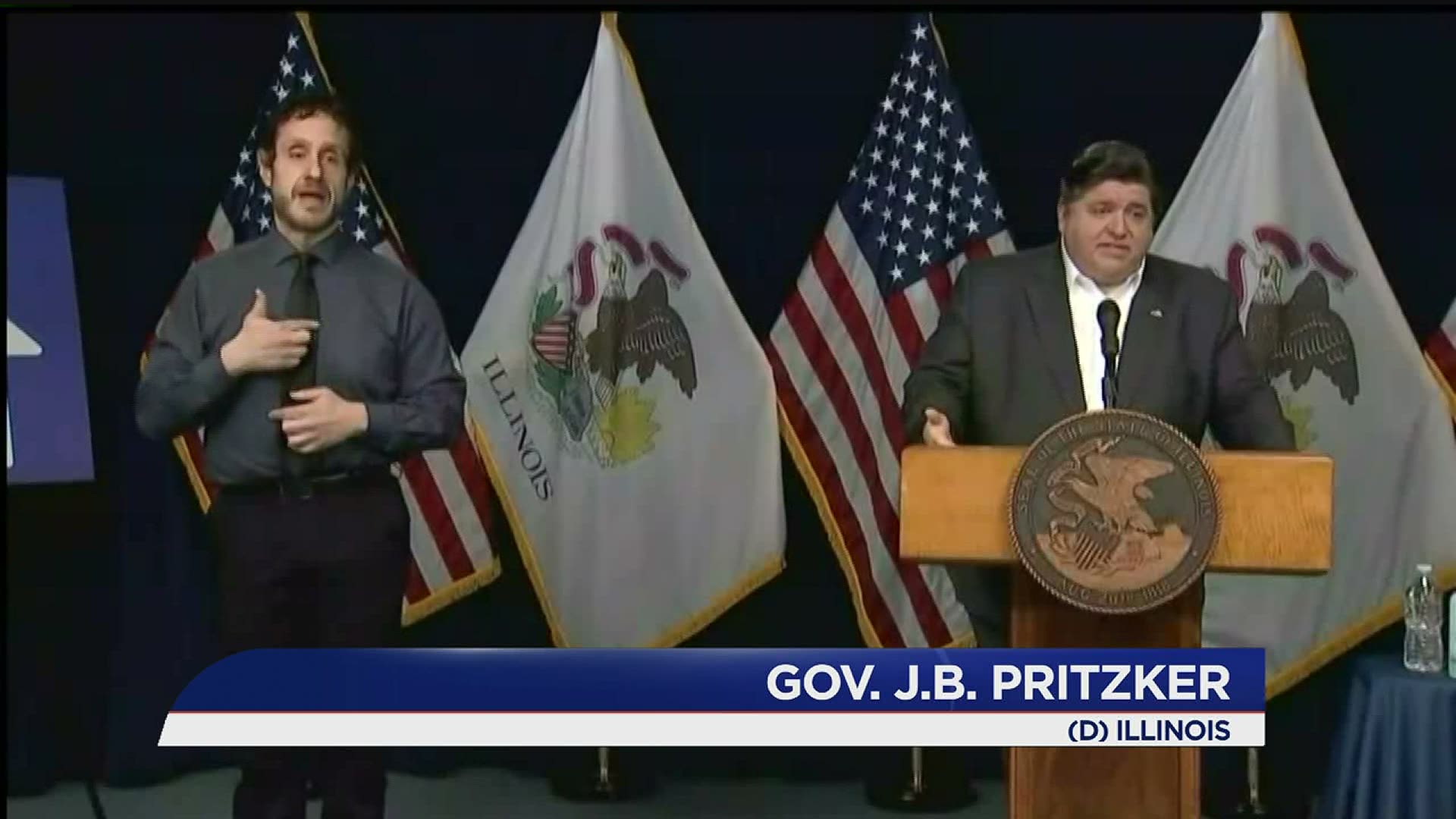Most deaths reported in a 24-hour period
Illinois leaders reported seeing the most deaths related to COVID-19 in a 24-hour period. On Tuesday, May 5, Dr. Ngozi Ezike with the Illinois Health Department said 176 more Illinoisans had lost their lives due to the virus. This makes for a total of 2,838 lives lost in Illinois.
"Those are our grandparents, those are our loved ones, those are our friends," said Governor J.B. Pritzker.
On Monday, it was projected that through the beginning of May there would be 50 to 150 deaths each day due to COVID-19.
In total, there have been 65,962 cases of COVID-19 reported in Illinois; 2,122 of those were new as of Tuesday.
There were 4,780 people being treated in Illinois hospitals as of Tuesday; 1,266 of those patients were in the ICU and 780 of them were on ventilators.
Of those who responded to recovery surveys, 47% of people who had COVID-19 said they had recovered within 14 days of their positive results, according to Dr. Ezike.
The framework for returning to normal
Looking ahead at when Illinois may start to reopen, Governor Pritzker said "until we have a vaccine, or an effective treatment, or enough widespread immunity... the option of returning to normalcy doesn't exist."
He outlined a five-phase plan called "Restore Illinois," which is a public health plan aimed at illustrating when and how the state will make its way back to normal life.
The phases are as follows:
Phase 1: This phase is done. The state went through it from early March through April 30.
During a state of rapid spread, a "stay at home" order is issued in an attempt to flatten the curve, or slow the spread as to not overwhelm the healthcare system. Get enough PPE to healthcare workers and buy time to expand the hospitals' capacity.
Phase 2: Illinois is currently in this phase as of May 1 with its modified "stay at home" order.
Adjustments are made for flexibility where public health experts advise. Essential gatherings of 10 or fewer people are permitted. Facial coverings are mandated in public spaces where social distancing is not possible.
Phase 3:
Some companies and businesses can reopen. Businesses like barber shops and health and fitness clubs can reopen with limitations, following guidance of the Illinois Department of Public Health.
Wearing face masks remains standard practice, people are expected to continue working from home if they are able.
Limited childcare and summer programs can operate.
Non-essential gatherings of 10 people or fewer can happen.
Phase 4: "Revitalization"
As declines in positivity rates and hospitalizations continue, restaurants, bars, theaters, retail stores and other businesses can reopen with capacity limits.
Schools, summer and fall programs and childcare facilities can reopen with guidelines.
Groups of 50 people or fewer are allowed, with health department guidance.
Phase 5: "Restored": A fully reopened economy, post COVID-19.
The step to get to phase five is a vaccine or effective treatment.
Positive COVID-19 rates are at or under 20%, increasing no more than 10% in a 14-day period.
There must not be an overall increase in cases, and stability must be maintained for hospital admissions over a 28-day span. Hospitals must be able to maintain availability of a surge threshold of ICU beds, medical beds, and ventilators.
Monitoring progress to move forward
To monitor Illinois' progress in these phases, state leadership has divided the state into four sections: North-east, North-central, Central and Southern. Communities will move through the phases with their designated region.
Governor Pritzker said the sections were strategically drawn based on the regions used by the Illinois Department of Public Health. These regions have been in existence for decades and are used to set perimeters for ambulance drivers and hospital collaborations.
With May 1 marking the beginning of Phase 2 in Illinois, the first possible day for a region to move into Phase 3 would be May 29. Assessment periods start over as a region moves into the next phase.
The governor said the health department will be monitoring the data in each region and using public health indicators to determine when it's time to move forward or backward.
"Moving backward is honestly the last thing that anyone wants to do," said Governor Pritkzer.
There is no set enforcement on these regulations, said Governor Pritzker, stating that state leaders had "no desire or capacity" to police the behavior of individuals. Instead, he said he hoped he could rely on Illinoisans working together. However, law enforcement has been asked to step in when necessary.
"We are quite literally writing the playbook as we go," he said.

